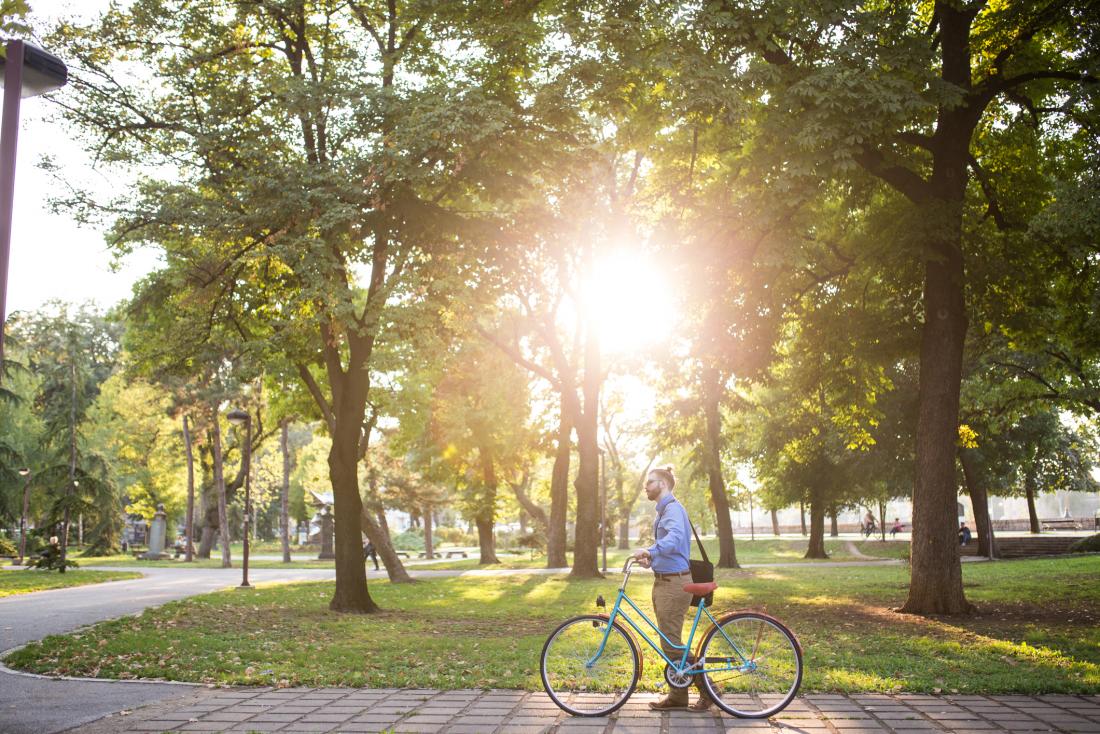Green spaces in cities can help people live longer

The world's largest review to date has recently established just how important urban green space is for staving off premature death.
Some 63% of people in the United States live in cities.
Some cities are greener than others — Philadelphia, for example, has a long history of urban greening and is even looking to bump up its 20% of green space — and northern cities tend to have less green space than southern ones.
Now, the World Health Organization (WHO) are looking to highlight the importance of green space in well-being and public health.
Urban green spaces such as parks, sports fields, woods, lakesides, and gardens give people the space for physical activity, relaxation, peace, and an escape from heat. Multiple studiesTrusted Source have shown that these spaces reduce stress and boost mental and physical health.
Green spaces are also associated with better air quality, reduced traffic noise, cooler temperatures, and greater diversity.
Furthermore, recent estimates put around 3.3%Trusted Source of global deaths down to a lack of physical activity, mostly as a result of poor walkability and limited access to recreational areas.
However, many of these studies have only looked at a particular point in time and have varied in how they measured people's use of green space.
Now, the most comprehensive review to date has analyzed nine longitudinal studies spanning seven countries, 8 million people, and several years of follow-up.
Appearing in The Lancet Planetary HealthTrusted Source, the meta-analysis found strong evidence to show that green urban spaces can help people live longer.
The Barcelona Institute for Global Health (ISGlobal) in Spain conducted this review in collaboration with Colorado State University in Fort Collins.
Parks can protect against early death
"The study shows that green space in cities reduces premature mortality," explained Dr. Mark Nieuwenhuijsen, director of Urban Planning, Environment, and Health Initiative at ISGlobal.
"Cities often don't have much green space," he added. "Green space is also good for climate mitigation through reducing heat island effects in cities and reducing air pollution effects."
"Green space is also good for carbon sequestration. So there are multiple beneficial effects. And increasing green space can, therefore, reduce a significant number of premature deaths in cities."
-Dr. Mark Nieuwenhuijsen
This study, set apart by its magnitude, was prompted by the WHO's need to develop a health impact assessment tool for green interventions in cities, Dr. Nieuwenhuijsen explained for Medical News Today.
More specifically, the WHO needed a robust picture of the link between green space and premature mortality in order to design a tool for green interventions.
"We systematically searched for and included all the cohort studies we could find on NDVI, an [easily] obtainable green space measure, and premature mortality, and conducted a meta-analysis," said Dr. Nieuwenhuijsen.
The research team, using the available evidence from studies that had looked at the same group of individuals over a number of years, analyzed the availability of green space (from satellite images) and premature death due to all causes.
The studies they reviewed covered more than 8 million people across the U.S., Canada, China, Italy, Spain, Switzerland, and Australia.
The researchers found that for every 0.1 increment in vegetative score within 500 meters of a person's home, there was a 4% reduction in premature mortality. These results show just how important green space is when strategizing public health.
Cities must focus on greening up
"Many cities are already greening, but this study provides further support that they should continue greening. Also, cities that do not have much green space should increase it — new parks, trees [on] roads, more grasslands, [etc.]," said Dr. Nieuwenhuijsen.
The researchers are now using their results to estimate how many premature deaths cities around the world could prevent if they were to reach their green space goals.
On what might come next, Dr. Nieuwenhuijsen told us: "The green space measure we used (NDVI) is a bit crude, although it works well. But the next stage is to find if some green spaces work better than others and exactly how the benefits occur to improve further."
Beyond being key to public health and preventing premature death, researchers cite the increase in biodiversity and mitigation of climate change as compelling reasons to bump up green spaces and make cities more sustainable and livable.
